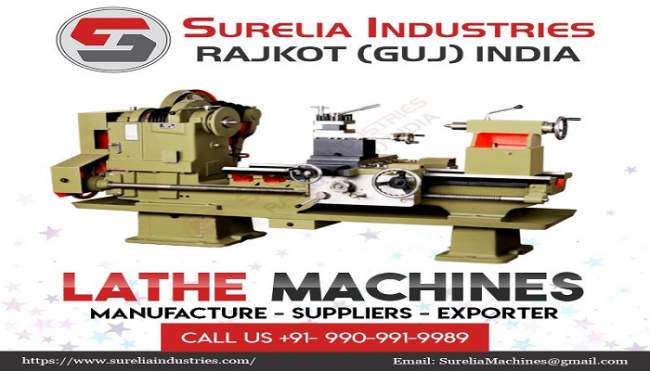Lathes are a vital machining tool used in the manufacturing industry. They support cutting, knurling, facing, and turning operations, among other things. With the origins of Ancient Egypt, they are believed to be one of the earliest machining tools.
They are quite different from other metal cutting machines. In most metal cutting machines, cutting tools turn against the workpiece and the workpiece is stationary, whereas, in lathe machines, the workpiece turns in opposition to the cutting tool. Therefore, the lathe machine’s working is indeed similar to the turning process and called turning centers.
The key purpose of lathe and how they work
Lathes are designed to extract material from workpieces by exposing it to a cutting instrument. The workpiece is mounted to the lathe at which point it rotates when pushing into a cutting tool. Lathe Machine is a massive and complicated device made up of several different parts. The headstock keeps the workpiece as it rotates. Lathes also have a tailstock to which the workpiece can be secured and is typically used for extremely large/long workpieces.
The workpiece is fixed in the chuck and rotated at a specified speed and the cutting tool approaches the revolving workpiece and cuts the material from the surface to a given depth at a constant rate. Material removal is done linearly across the side or face.
Manually operated or CNC:
Today, CNC lathe machines have dominated manual machines, while the use of manual lathe machines persists. A manual lathe is suitable for customized operation and small rework operation. Being a versatile piece of equipment, it has gained from series of modifications&developments to make lathes easy to use and to make a broader variety of products in less time. Ultimately it has contributed to the production of CNC lathes which take advantage of computer control to make machining both faster and more precise. They are available in various sizes and in a wide range of capacities. Lathe axis moves in X&Y axes and sophisticated models, they feature, multi-axis turning/milling/drilling/tapping/deep hole boring all together in one operation.
If you’re thinking of buying your first lathe, you may not feel that a CNC lathe is worth investing in. Many people manage fine with manual lathes. But the advantages of a CNC lathe are worth looking at, and when you weigh the alternatives, you may find that CNC machining is the smarter choice for you.
- Production With Less Experience
A CNC lathe allows you to do complex machining with less experience because the computer controls the machine to make complicated cuts. Some people enjoy working with a manual lathe but it takes time and a lot of preparation to become a lathe specialist, and this can lead to loss of resources and supplies if you don’t get your initial attempts don’t work out.
- Consistency&Accuracy
It needs a lot of experience to create the same pieces using a manual lathe. A small amount of variation is acceptable but sometimes exact copies are required, and it can be hard and time-consuming to create them by manual means. A CNC lathe eliminates this issue. The lathe follows the same instructions and the same cutting path each time for parts that are the same. They are helpful when extreme accuracy is needed.
- Safety
safety is one of its main advantages. Using CNC machines are much safer than manually controlled machines as they work behind a guard or even a closed, transparent safety door.
- Production cost
A CNC lathe may cost more than a manual lathe if you make highly complex parts. Instead of working on the lathe for hours, you can design the parts you need and allow the computer to manage the inputs, freeing time for other work. Increased accuracy also means less material wastage as the part will be made accurately for the first time.
To get more information and clarity on the Lathe machine Manufacturers and their variants, our sales executives are ready to connect on a call. To buy a lathe machine browse Surelia Industries and start or expand your profitable dream business.


